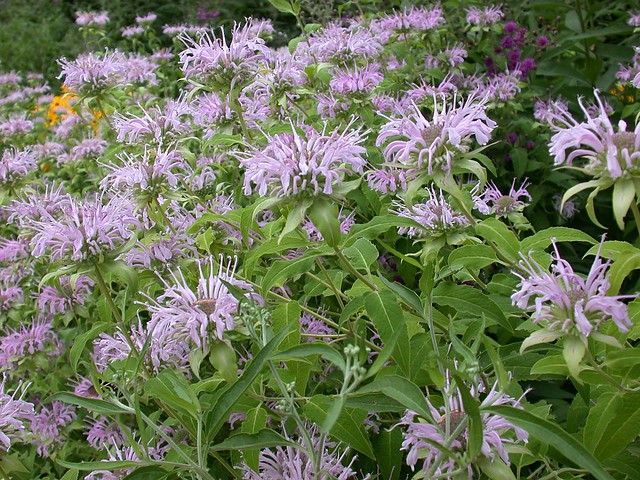
Monarda fistulosa, Butterfly Habitat Garden
[This is the first in a series of posts about Smithsonian Gardens. Please see my introductory post here.]
The National Museum of Natural History is one of the Smithsonian Institution's largest and most popular museums, vying with the National Air and Space Museum as the most-visited Smithsonian museum. But many visitors overlook the gardens around the building, including the Butterfly Habitat Garden and Urban Bird Habitat Garden. These gardens deserve more attention; not only are they beautiful, but they are AAM (American Alliance of Museums) accredited and have been designated as wildlife sanctuaries by the National Audubon Society.

Butterfly Habitat Garden, National Museum of Natural History
Gardens wrap all the way around the museum so there's no excuse not to see them. And come on, how many gardens are decorated with a dinosaur skull? The gardens are administered by supervisory horticulturist Jonathan Kavalier, to whom I am indebted for much of the information I present here. Jonathan, horticulturist James Gagliardi, and 2 gardeners plan, plant, and maintain the gardens year-round to beautify the museum and to further its educational mission. This is the objective of Smithsonian Gardens in general, but the gardens around this museum are particularly tied to its focus on natural history and the natural world.
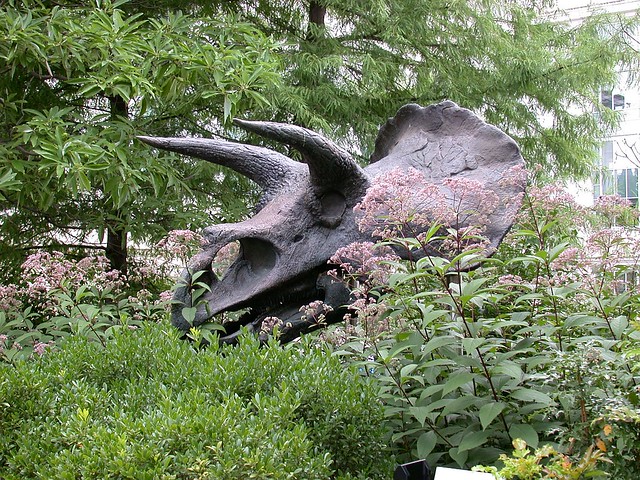
Triceratops skull, Butterfly Habitat Garden

Supervisory horticulturist Jonathan Kavalier, gardener Mike Allen, and horticulturist James Gagliardi (l-r) in the Urban Bird Habitat
Recent years have seen extensive and sometimes adventurous plantings around the building. The main entrance, facing the National Mall, is flanked by two hardy palm trees (Trachycarpus fortunei), although they took a hit from our cold winter and are still recovering. Beds at the Constitution Avenue entrance have a bold tropical theme that changes every year, with a central bed of ginkgos, cycads, conifers, ferns, and other "primitive" plants. This is the same spot where "Uncle Beazley", a life-sized fiberglass triceratops, greeted museum visitors many years ago (he has since been relocated to the National Zoo.) These beds replace two large American elm trees that succumbed to Dutch Elm Disease several years ago and had to be removed. (New elms being planted on the museum grounds are resistant cultivars.)
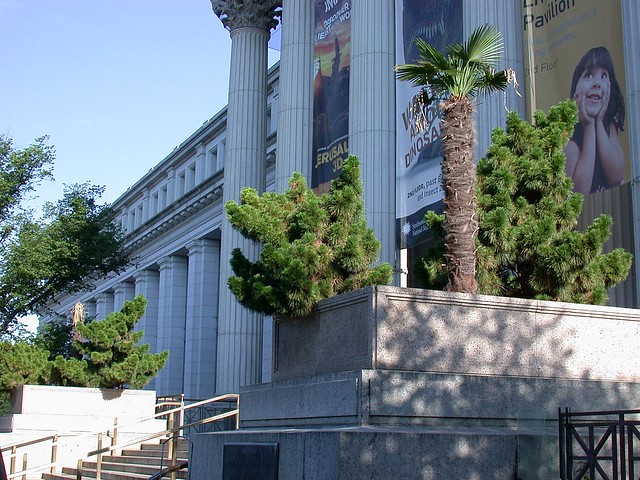
Hardy palm tree (Trachycarpus fortunei) at the front (National Mall) entrance
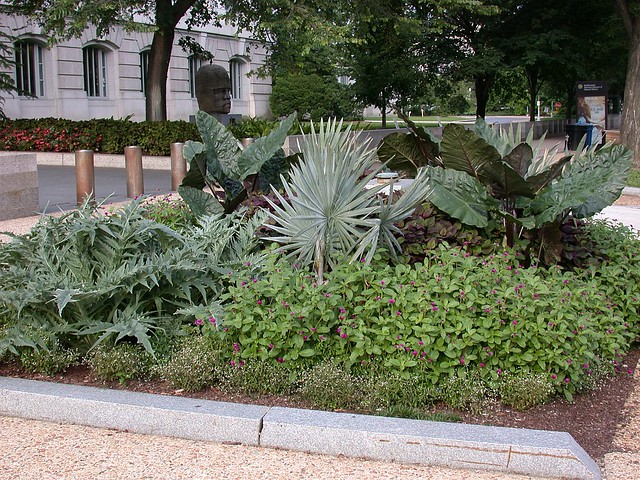
Tropical bed, Constitution Avenue entrance
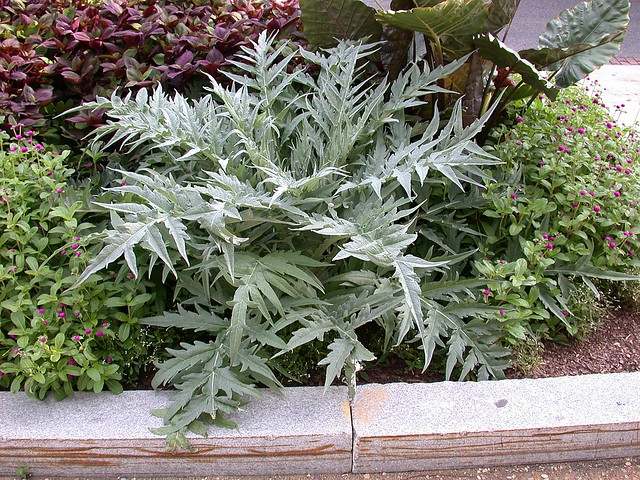
Cynara cardunculus

Tree ferns (October 2012)
The Butterfly Habitat Garden was created in 1995 in a narrow, neglected walkway between 9th St. and the museum's east parking lot as a collaboration between Smithsonian Gardens and the museum, with funding from the Smithsonian Women's Committee. With additional funding from the Garden Club of America, the garden was later expanded to include beds along the south side of the building.
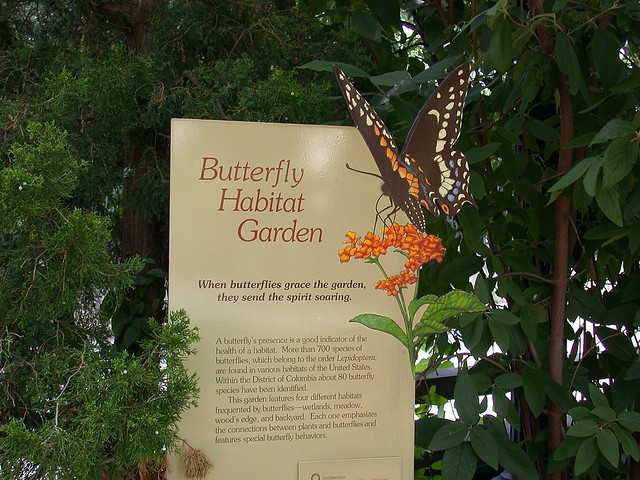
The gently curving paths connect several distinctly different habitats to create an illusion of a much larger garden. The garden includes both sunny and shady beds, planted with food plants for larvae and nectar plants for adults. The nectar plants mostly being plants with large, brightly colored, or otherwise showy flowers, the garden is also very appealing to humans! The garden is meant to be educational as well as beautiful, with informative signage, but also happens to be a great place to stroll on a pleasant day, to get out of the sun, to eat your lunch or to just sit and relax!

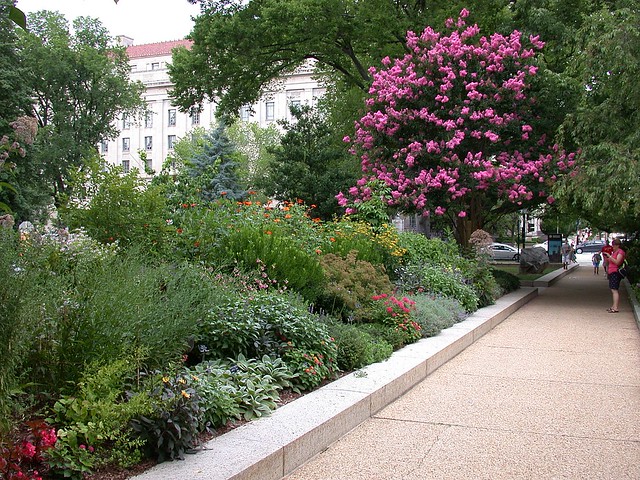
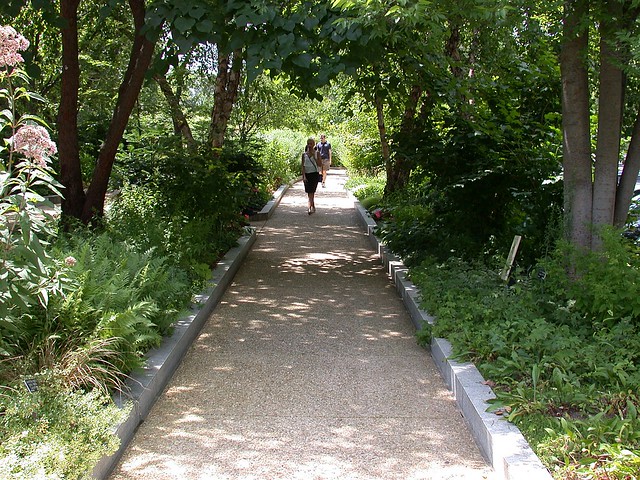
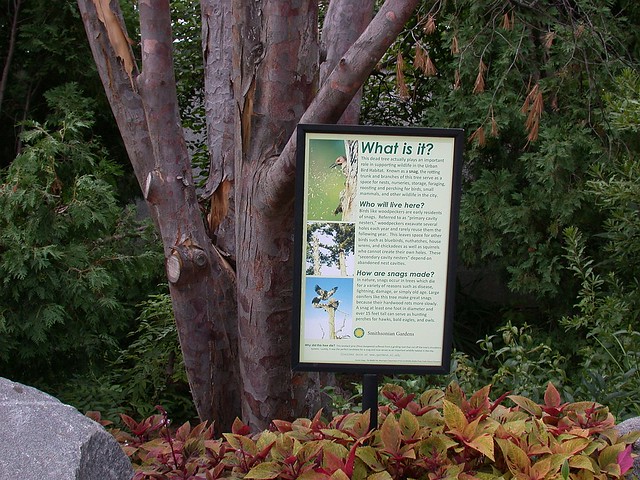
Dead tree becomes a snag with educational signage (click here for larger version of sign)
No herbicides, pesticides, or other chemicals of any kind are sprayed in the garden, and plants are left in place through the winter and not cut back until spring. Strangely enough, on the days I took these photos I didn't see any butterflies. It can be difficult to attract butterflies in the middle of a city; Jonathan told me that butterfly numbers in the garden fluctuate from year to year, and that this year they seem to be down. This has been the case in my own garden, several miles from the urban center and near Rock Creek Park, and I've heard several gardeners mention a dearth of butterflies this year. I'm not sure if the butterflies have gotten off to a late start after such a cold winter and late spring, or if their numbers are truly diminished for some reason.
Jonathan Kavalier provides tips on butterfly gardening (Smithsonian video)
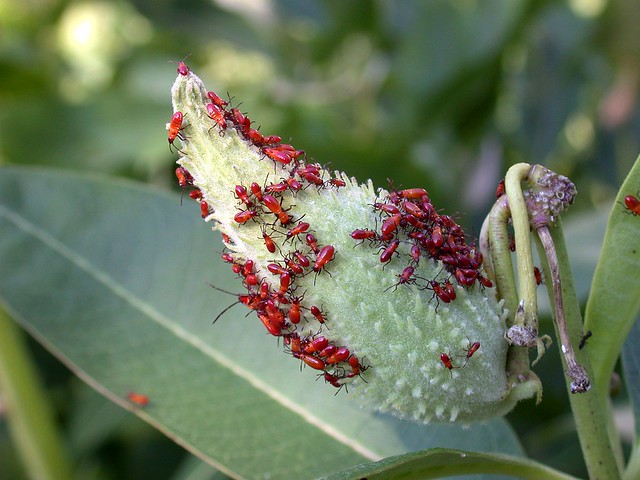
Milkweed bug nymphs on milkweed seed pods (Asclepias syriaca)


Vernonia gigantea
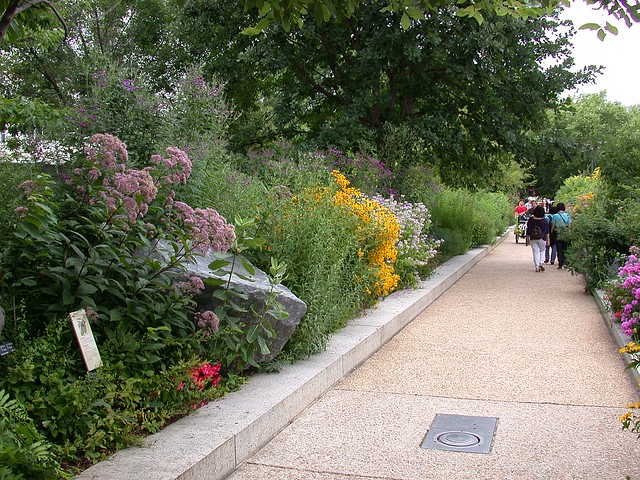
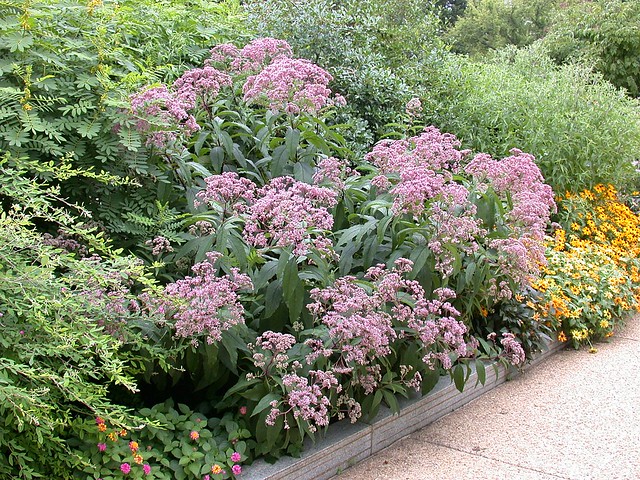
Eutrochium (Eupatorium) purpureum, Joe Pye weed

Phlox paniculata
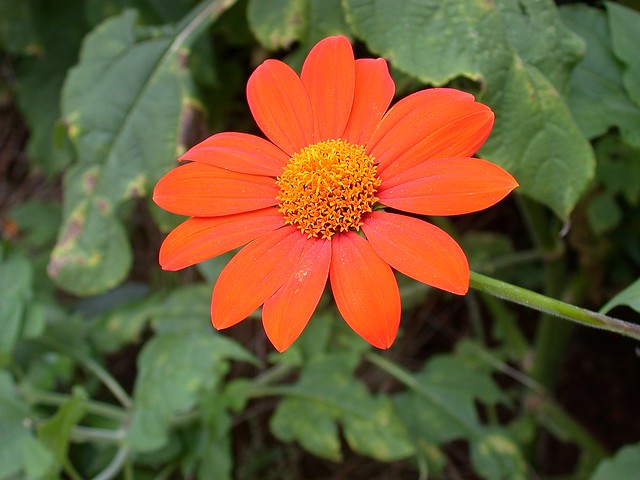
Tithonia rotundifolia

Passiflora incarnata
Like the Butterfly Habitat Garden, the Urban Bird Habitat Garden is a joint project between Smithsonian Gardens and the museum, with funding from the Smithsonian Women's Committee. This is one of the Smithsonian's youngest gardens, designed to provide food, water, and shelter for birds--always a challenge in the middle of a city! The garden is at the intersection of two busy downtown streets, from the northwest corner of the museum at Constitution Avenue and wrapping around the 12th Street side. The garden has less emphasis on showy flowers and more on plants that provide fruits and seeds, although some of the flowers will attract hummingbirds. It also has fewer paths or walkways, and no sitting areas, perhaps also because birds are more sensitive to disturbance than butterflies. Jonathan tells me there are plans to expand this garden in the coming years.
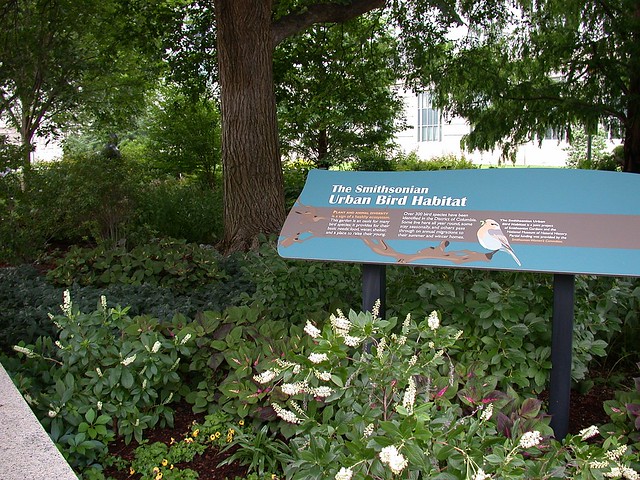
The garden currently exhibits a large sculpture of a passenger pigeon, one of five extinct bird species represented by the Lost Bird Project (with the other four in the Enid A. Haupt Garden). The sculpture is particularly stark and lonely-looking because the passenger pigeon was a social bird, with flocks consisting of millions of individuals. "Martha", the last known passenger pigeon, died in the Cincinnati Zoo in 1914 and is now a specimen in the Smithsonian Institution.
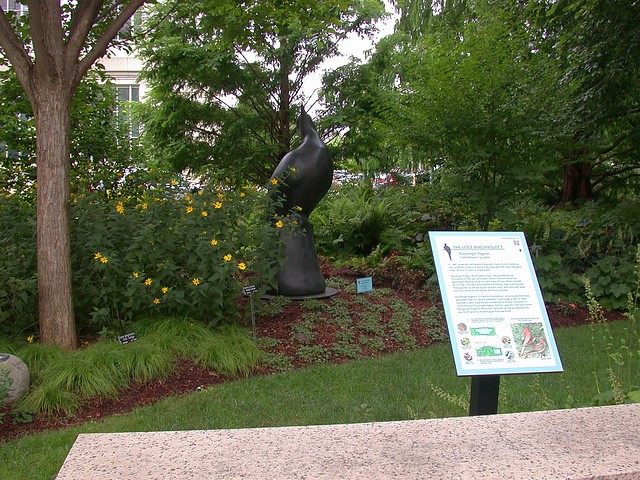
Passenger pigeon sculpture
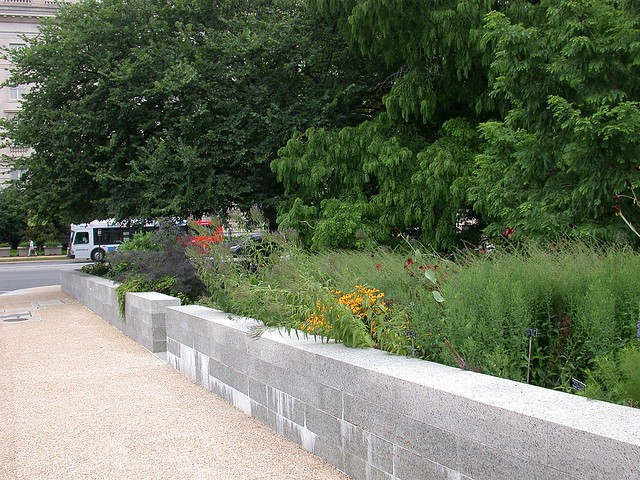
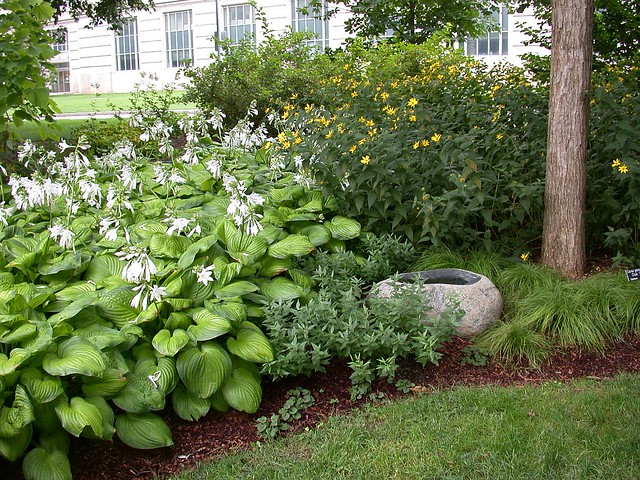
Water sources are important for birds
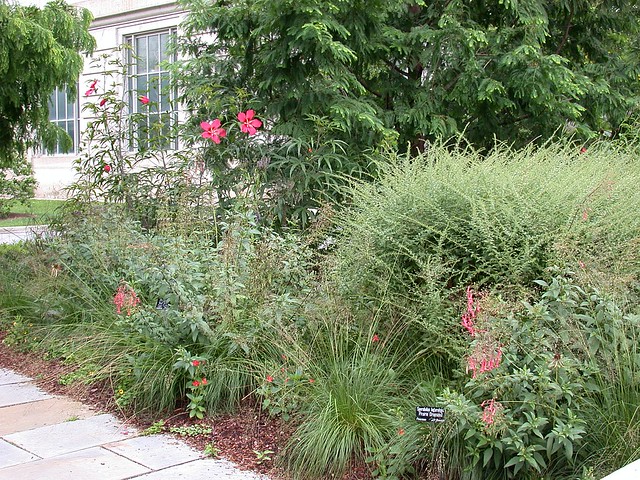
Sunny border
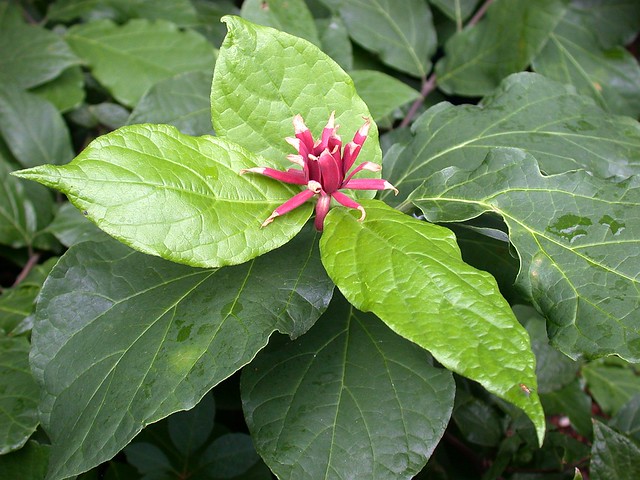
Calycanthus floridus
Please visit the Smithsonian Gardens website for more information. For many more of my own photos, click here: Smithsonian Gardens July 2014 (2).
Click here to jump to part 2: Mary Livingston Ripley Garden
Did you like this post? Please click on the share buttons below to share on Facebook, Twitter, or Pinterest!

WONDERFUL TOUR...TYVM
ReplyDeleteGlad you enjoyed it, Greg; there's more coming in the next few days as I feature the Ripley and Haupt gardens. Still lots of photos to sort through!
DeleteGreat effort by the museum with their planting and garden, showing a lot of correlation between the collection inside and flora outside the museum.
ReplyDeleteI'm really impressed with what the gardens staff have done around this museum. All the staff but especially Jonathan deserve a lot of credit for what is going on here!
Deleteenjoyed the tour,the pictures are Beautiful!!
ReplyDeleteThanks, I'm glad you enjoyed it!
DeleteI think these gardens are often unnoticed by the public. Excellent post! Headed into DC soon to visit them again. :o)
ReplyDeleteThanks! I think many tourists are pretty oblivious to nice gardens and interesting plants in general (but if something looks bad, you can be sure they'll notice!); but I think many visitors who do have an interest in plants and gardening, as well as many local gardeners who rarely get downtown, may have no idea the gardens are there.
DeleteThis is a greeat post
ReplyDelete